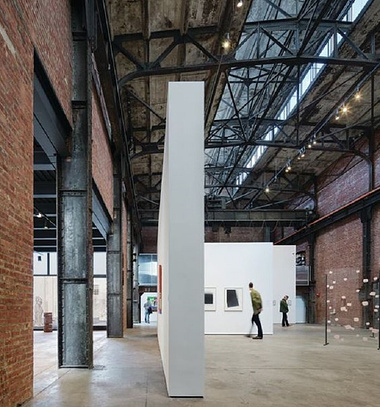- http://
Technological advances have improved workplace safety in every industry and sector. The American construction industry, while a late adopter of some of the newest innovations, is looking to reduce the cost of human life, and worker injuries, while improving efficiencies and profitability.
The construction industry in the United States represents more than $1.7 trillion dollars per year in revenue, making it one of the highest-growth and largest domestic industries in the country.
In 2014 alone, the United States Department of Labor, Occupational Safety and Health Administration reported that there were 4,821 general labor fatalities, or approximately 3.4 per 100,000 full time workers. The highest rate of construction fatalities was observed in the Hispanic community, accounting for more than 15 deaths per week on average, for 2014. Contractors and construction laborers represent 20.5% of all workplace fatality cases in the United States annually.
The Occupational Safety and Health Administration defines four major risk categories for construction fatalities, which are known as “the fatal four”. These are preventable workplace accidents on the construction site, which include:
• Falls (39.9%) including falling from roofs, scaffolding, ladders and from machinery or equipment.
• Electrocutions (8.2%), which include heavy equipment operation and from the use of power tools, electrical contractors and other accidents.
• Struck by an object (8.1%) which includes falling construction materials, hand equipment and heavy equipment (machine) accidents.
• Caught in between (4.3%) which include being compressed or hit by heavy equipment, building materials, falling structures and scaffolding.
The Occupational Safety and Health Administration estimates that if the “fatal four” were eliminated from job sites (due to worker safety improvement and new technology) more than 500 construction deaths would be avoided on an annual basis, and countless injuries.
According to the 2016 Liberty Mutual Research Institute Workplace Safety Index, with data from the U.S. Bureau of Labor Statistics (BLS) and the National Academy of Social Insurance, the annual cost of construction injuries and fatalities exceeds $61 billion dollars per year. It is a significant and recurrent human loss, and a serious detriment to the American construction industry, . Thanks to innovations in engineering and technology however, construction workers and development companies have new resources to help stem injuries and fatalities.
In mining operations, or other underground structures, the absence of safe lighting can contribute to injuries and fatalities, including severe burns and electrocution. Until now, lighting technology involved traditional strings of bulbs or lamps, that were time consuming to install. In addition, some types of lighting have presented significant fire risks, igniting with fuel fumes and natural gas.
A third risk to using traditional lighting on construction sites, is attributed to glare. Often in dimly lit work areas, high watt bulbs and lamps are used to illuminate a wall, or the ground. Unfortunately, the glare caused by extremely bright bulbs can temporary obscure the construction workers vision, and contribute to heavy equipment accidents, or trip and fall injuries, and fatalities.
Both iridescent and candescent lighting meet safety standards, but they can also generate heat, which is a concern in enclosed areas. Workers can be tempted to use fewer lights to improve temperature comfort, while placing themselves at increased risk.
Advancements in LED lighting have been applied in the past five years, to enhance the visual acuity and safety of construction personnel, while eliminating some of the safety risks. A temporary LED string of lights or system, designed for high illumination without glare, is conveniently deployed using daisy chain connections. This style of site lighting can be installed quickly as a temporary lighting solution, and strings can extend up to one mile in length, from a single power source.
An article in the , reported that the advantages of LED construction lighting are numerous:
• Industrial grade LED lights deliver more radiance and output than a 100-watt incandescent alternative.
• A 10-watt LED bulb uses only 10% of the electrical energy that a 100-watt traditional bulb requires.
• Many models include “bird cage” bulb guards to reduce breaking, and risk of electrocution in damp environments.
The implementation of new LED construction lights and industrial strings could have a significant impact on reducing worker injuries and fatalities. An added benefit? They are also a more sustainable and environmentally friendly option.
Fall injuries and fatalities represent some of the most common, and preventable labor injuries on American construction sites. The construction industry is the leading sector for fall-related fatalities, accounting for 798 worker deaths in 2014 alone, per the Bureau of Labor Statistics, at a cost of more than $70 billion dollars per year.
Since trip and fall injuries can happen through a variety of circumstances, there are several apps that can be shared by management and staff, to not only promote awareness and education, but to provide real tools to enhance safe site practices. Per a survey conducted by , more than 79% of construction sites used smartphone apps to improve safety, in 2014.
Safesite is a cloud application that allows project managers (and up to ten other users), to access safety audit tips, logs and guidelines to improve construction site safety. The app also generates weekly and monthly safety audits and reports.
Keeping safety standards accessible for reference and regular review, is the first step to improving occupational safety on the construction site. The Safety Meeting App was nominated as the best new construction app of 2016, and it provides information for over 34 distinct trades, including plumbing, electrical, engineering, heavy equipment operation and more. The app helps organize safety information and meetings that comply with American OSHA standards. One of the most unique aspects of this popular app, is that it is available in translated Spanish for Latino construction workers, who represent the largest number of annual fatalities, due to safety training and language barriers.
Other technology including 3D printing of scaffolding and other advances will revolutionize the construction sites of the future, and reduce worker injuries and fatalities, while improving the profit center for the world’s largest developers.
